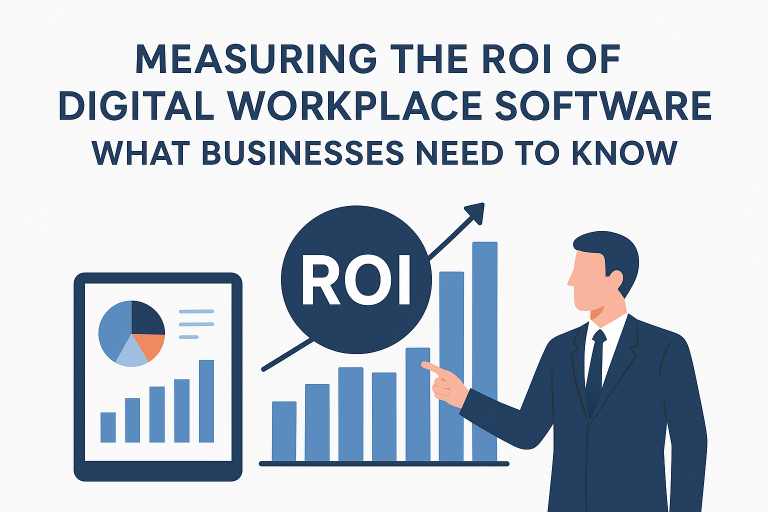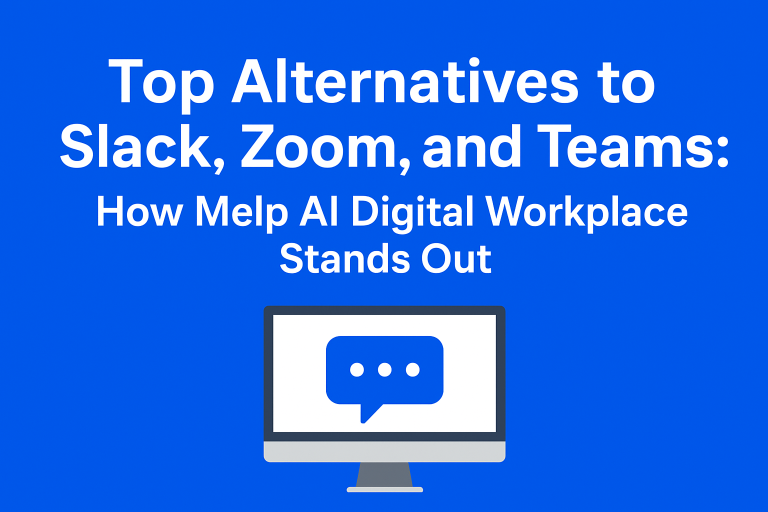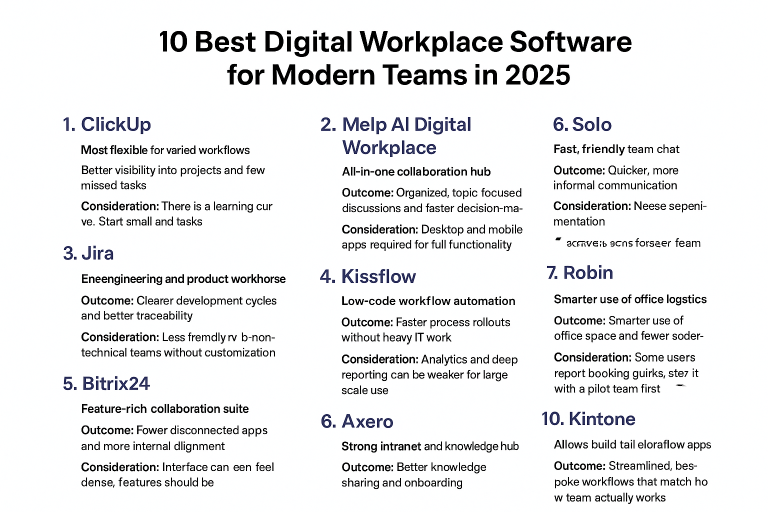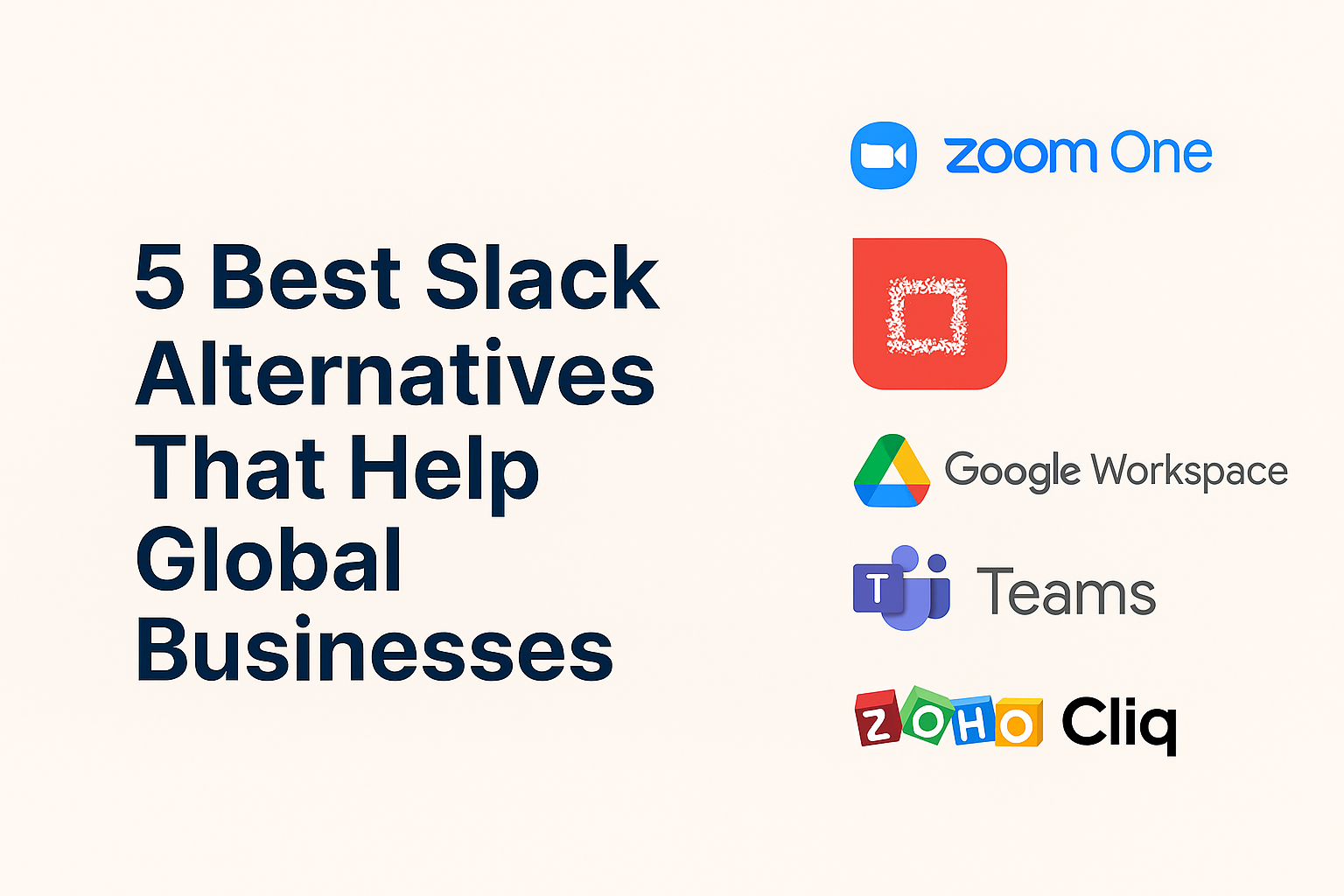10 Key Benefits of Team Collaboration and Adopting a Unified Digital Workplace

Collaboration is the day-to-day muscle that lets teams move from idea to impact. When teams share context, make decisions quickly, and access knowledge without friction, organizations win time, reduce rework, and deliver better outcomes. Below, I unpack ten concrete benefits of strong team collaboration and explain why adopting a unified digital workplace amplifies them. I’ve woven in research, practical examples, and Melp as an example of an all-in-one digital workplace that some teams choose when they want fewer app handoffs.
Why this matters right now
Digital tools multiplied during the last decade, and while they brought power, they also brought fragmentation: chat in one place, files in another, approvals scattered across email. Research shows that when social and collaborative technologies are properly used, interaction-worker productivity can rise meaningfully — McKinsey estimated improvements on the order of 20–25% when collaboration tools reduce friction and surface expertise faster. (Source: McKinsey — Capturing business value with social technologies). (https://www.mckinsey.com/~/media/McKinsey/Industries/Technology%20Media%20and%20Telecommunications/High%20Tech/Our%20Insights/Capturing%20business%20value%20with%20social%20technologies/Capturing%20business%20value%20with%20social%20technologies.pdf). McKinsey & Company
At the same time, large industry analyses (Microsoft’s Work Trend Index) and workplace research (Gallup) show that hybrid work, information overload, and dropping engagement make it urgent for leaders to streamline how teams coordinate and access knowledge. (Microsoft Work Trend Index: https://www.microsoft.com/en-us/worklab/work-trend-index). Microsoft+1 Gallup’s State of the Global Workplace flags falling engagement levels that correlate with productivity loss — another reason to reduce friction and improve collaboration. (https://www.gallup.com/workplace/349484/state-of-the-global-workplace.aspx). Gallup.com
Finally, analyst guidance from Gartner shows that a well-designed digital workplace can boost employee experience, collaboration, and measurable productivity while simplifying governance. (https://www.gartner.com/en/infrastructure-and-it-operations-leaders/topics/digital-workplace). Gartner
1) Faster, clearer decision-making
When conversations, docs, and approvals live in one place, teams cut the back-and-forth email taxis and shrink time-to-decision. Instead of waiting for an attachment to be emailed, a reviewer can open the latest doc, comment in-thread, and approve — all where the work is happening.
Practical tip: Use a shared decision log inside your workspace (one short note per decision: what, who, why, date). That single record removes repeated context-setting in future discussions.
2) Less duplicated work and fewer file silos
Multiple tools breed multiple copies of the “same thing.” A unified digital workplace makes one source of truth discoverable: design files, specs, meeting notes, and final artifacts live under the same search. That reduces rework and saves tens of hours per project.
Example: A product manager finds last year’s user-research summary in seconds instead of asking three people and waiting 48 hours — that time saved often makes the difference between shipping an incremental improvement or missing a sprint.
3) Faster onboarding and stronger knowledge transfer
New hires ramp quicker when context (chat history, recorded demos, decision notes) is preserved and searchable. Instead of asking ten people the same questions, a new teammate can search the workspace, find the recording and the follow-up notes, and move forward.
Measure: Track “time to first meaningful contribution” pre- and post-consolidation to quantify improvement.
4) Better remote team collaboration and equal visibility
Remote or hybrid teams suffer when work is fragmented across apps. A single platform standardizes where conversations occur so location doesn’t dictate who’s informed. This reduces “who knows what” gaps between in-office and remote teammates.
5) Higher employee engagement and reduced friction
Teams that spend less time hunting for files and more time doing meaningful work report higher satisfaction. Given Gallup’s findings about engagement declines, focusing on removing daily friction — better collaboration patterns, reliable workflows, predictable rituals — is a practical lever for leaders. (https://www.gallup.com/workplace/349484/state-of-the-global-workplace.aspx). Gallup.com
6) More innovation through cross-functional visibility
Great ideas rarely live in a single silo. When marketing, product, support, and engineering can see the same artifact and comment inline, feedback cycles accelerate and experiments run faster. Make cross-team channels for lightweight idea sharing; keep them searchable.
7) Clearer accountability and fewer missed deadlines
When tasks, owners, and due dates are visible alongside the work, handoffs become routine and follow-ups are less adversarial. Use task cards with a mandatory “owner” field and a short status update to keep the whole team aligned.
8) Reduced search time — real productivity gain
Studies repeatedly show that knowledge workers waste hours each week searching for information across multiple tools. Centralized search — spanning chat, files, and recordings — is a high-impact feature of a unified digital workplace. McKinsey’s research on social technologies highlights this kind of time recapture as a major source of productivity improvement. (https://www.mckinsey.com/industries/technology-media-and-telecommunications/our-insights/capturing-business-value-with-social-technologies). McKinsey & Company
9) Lower tool costs and simpler IT governance
Tool sprawl increases license, integration, and admin costs. Consolidating into a platform that covers chat, meetings, files, and tasks can reduce vendor overhead and simplify security (one place for access policies, one place for audit logs). Gartner guidance shows this is both an efficiency and risk-management play. (https://www.gartner.com/en/infrastructure-and-it-operations-leaders/topics/digital-workplace). Gartner
10) Better security and regulatory compliance posture
Fewer storage locations and centralized access controls make it easier to enforce policies, run audits, and respond to requests. That reduces compliance risk — especially for regulated industries where document lineage and access logs matter.
A concrete workflow improvement (real-feeling example)
Marketing at a mid-size SaaS company used to launch campaigns with five tools: chat, a shared drive, a task tracker, a meeting tool, and separate notes. The pre-launch checklist required manual reconciliation across tools. The team piloted a unified digital workspace, such as the Melp AI digital workplace, and moved campaign briefs, assets, timeline, and handoff tasks into a single project space. The launch cycle was shortened by two weeks because approvals were in-thread, assets were versioned automatically, and the post-mortem was available immediately after launch — no one had to reconstruct what happened. The impact: fewer last-minute changes, less cross-team friction, and a cleaner post-launch analysis.
How to get started (practical steps)
- Map your current tool footprint. List every app used for communication, files, tasks, and meetings.
- Choose one pilot team. Preferably cross-functional and motivated to change.
- Define 3 metrics. (Time-to-decision, rework incidents, time spent searching.) Baseline them.
- Set naming and tagging rules. Make search work for everyone from day one.
- Train managers to model habits. Managers capturing decisions and tagging artifacts is the simplest cultural lever.
- Run the pilot for 30–60 days and measure. Use concrete before/after numbers to decide next steps.
Closing — why a unified digital workplace is a practical investment
Good collaboration is not merely a culture slogan — it’s a measurable capability. When work, context, and decisions live together, teams spend less time reconnecting and more time delivering. Analysts and researchers (McKinsey, Microsoft, Gallup, Gartner) consistently point to the real gains from reducing information friction and standardizing where work happens. (McKinsey: https://www.mckinsey.com/~/media/McKinsey/Industries/Technology%20Media%20and%20Telecommunications/High%20Tech/Our%20Insights/Capturing%20business%20value%20with%20social%20technologies/Capturing%20business%20value%20with%20social%20technologies.pdf; Microsoft Work Trend Index: https://www.microsoft.com/en-us/worklab/work-trend-index; Gallup: https://www.gallup.com/workplace/349484/state-of-the-global-workplace.aspx; Gartner: https://www.gartner.com/en/infrastructure-and-it-operations-leaders/topics/digital-workplace). Gartner+3McKinsey & Company+3Microsoft+3
If your organization wants to reduce rework, shorten cycles, and make remote team collaboration feel natural rather than brittle, start with one team and measure the three things that actually move the needle: time-to-decision, rework, and search time. Many teams find that moving to an all-in-one platform such as Melp App makes adoption easier because people spend less time switching apps and more time getting work done.






